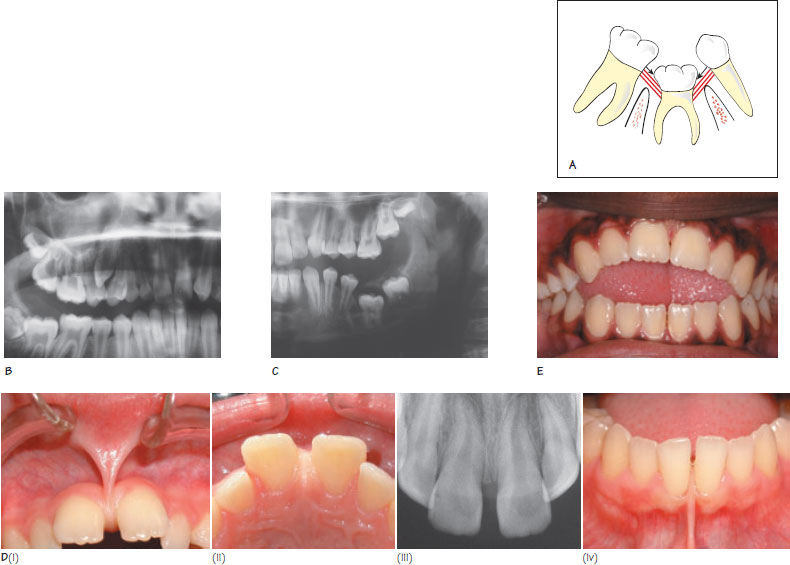9
The aetiology of malocclusion
(ii) locals factors and habits
Table 9.1 The effects of early loss of deciduous teeth. Balancing extraction refers to the loss of teeth from the contralateral side of the arch to minimise a centreline shift.
| Tooth lost | Effects on permanent dentition | Action required |
| Deciduous incisors |
|
|
| Deciduous canines |
|
|
| Deciduous first molars |
|
|
| Deciduous second molars |
|
|
Table 9.2 Consequences of infraocclusion of a deciduous molar.
| Tooth | Consequences |
| Infra-occluded deciduous molar |
|
| Permanent successor |
|
| Developing occlusion |
|
Figure 9.1 (A) Tension arises in the transseptal fibres (shown in red) as the infraoccluded molar moves below the occlusal plane. The direction of this force results in exaggerated tipping, reduced vertical development and a centreline shift of adjacent teeth. (B) Transposition of the right maxillary canine and first premolar. (C) Primary failure of eruption of the lower left first permanent molar. (D) (i) A low maxillary frenal attachment associated with a diastema. (ii) A positive blanch test. (iii) A small alveolar notch between the central incisors that results in disruption of the transseptal fibres. (iv) A high lower frenal attachment. (E) An asymmetrical anterior open bite is often associated with a digit sucking habit.

Local factors
Dento-alveol/>
Stay updated, free dental videos. Join our Telegram channel

VIDEdental - Online dental courses


